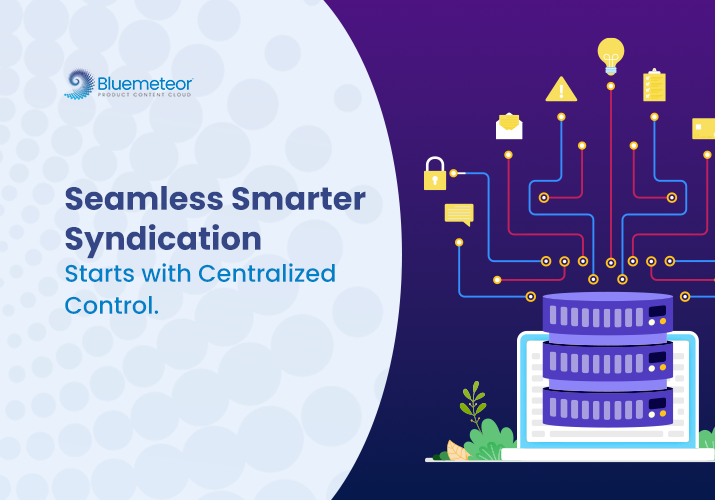5 Biggest Product Data Challenges Industrial Distributors Face & How to Fix Them with PIM

Industrial distributors often struggle with product data management challenges, which can significantly impact efficiency, compliance, and profitability. Therefore, in this guide, we’ll break down the five most critical product data challenges and, more importantly, explore how Enterprise Product Information Management (PIM) can effectively resolve them.
1. Inconsistent Supplier Product Data
Distributors frequently receive supplier product data in various formats, which, in turn, leads to inconsistencies that complicate integration and analysis. Thus, this lack of standardization can cause inefficiencies, errors, and delays in order fulfillment.
Moreover, 60% of distributors report product data inconsistencies as a key challenge. Additionally, manual data entry contributes to up to 30% of errors in product information.
Furthermore, disorganized product data significantly slows down time-to-market, ultimately impacting competitiveness.
For example, a distributor may receive product specifications from multiple suppliers, each using different units of measurement. Without standardization, this discrepancy can lead to misinterpretations and inventory issues. to misinterpretations and inventory issues.
Solution:
- Enterprise PIM standardizes and centralizes supplier data. A PIM platform structures data, automates validation, and ensures uniformity across all sales channels.
- Data mapping & transformation: Convert inconsistent supplier files into a structured format using Bluemeteor SKU Onboarding Portal, powered by AI.
- Real-time synchronization: Ensure any updates made by suppliers are reflected instantly across all digital touchpoints.
Thus, this harmonization ensures consistency across all supplier information, ultimately facilitating seamless integration and significantly reducing errors.
2. Poor Product Data Quality & Completeness
Maintaining accurate and complete supplier product data is a persistent challenge. Inaccurate or incomplete data can lead to miscommunication, procurement delays, and dissatisfied customers. A survey highlighted that procurement and supply chain leaders have experienced negative effects due to inaccurate supplier information, including wasted time (63%) and financial loss (40%).
According to Deloitte, 93% of Chief Procurement Officers (CPOs) prioritize cost reduction for their organizations within the next year.
Example: A distributor relying on outdated supplier contact details may face stock replenishment delays, leading to lost sales.
| Issue | Impact | Solution |
| Missing product specs | Miscommunication, returns | Enforce mandatory attributes in PIM |
| Outdated pricing | Profit loss, pricing errors | Real-time data sync with suppliers |
| Incomplete certifications | Compliance risks | Auto-validate required fields |
Solution:
- First, implement an Enterprise PIM system to validate, enrich, and maintain supplier product data efficiently.
- Next, automate updates to ensure accuracy and prevent inconsistencies.
- Lastly, schedule regular data audits to clean and verify records, ensuring reliable and up-to-date information.
Deloitte reports that 60% of CPOs identify poor master data quality, lack of standardization, and weak governance as the top five procurement challenges.
3. Lack of Supplier Collaboration & Product Data Transparency
Suppliers and distributors often work in silos; as a result, synchronizing product data across multiple systems, such as ERP and PIM platforms, remains challenging, with misalignment persisting.
This, in turn, causes discrepancies in inventory levels, pricing, or product availability, leading to delayed responses, unclear product updates (such as overstocking or stockouts), and missed sales opportunities.
For this reason, achieving seamless data synchronization is essential for maintaining accurate and up-to-date product information, which is why supplier collaboration is a top priority.
Notably, 58% of distributors struggle with poor communication from suppliers.
Additionally, limited data access creates inefficiencies in updating product catalogs.
Example: A distributor’s ERP shows a product in stock, while the PIM indicates it’s out of stock, leading to fulfillment confusion.
Solution:
- Enterprise PIM integrates with ERP, CRM, and supplier portals.
- Centralized Supplier Portals: Enable suppliers to directly manage and update their product data within a secure PIM platform.
- Automated alerts & workflows: Notify suppliers about missing or incorrect data instantly.
- Real-time supplier collaboration: Bluemeteor SKU Onboarding Portal provides a unified space for collaborative product data management.
Distributors using supplier collaboration tools see a 25% improvement in operational efficiency.
4. Managing Rapidly Changing Product Data
With constant innovation and frequent product launches, the high-tech distribution industry is always evolving. Consequently, staying up to date with the ever-changing specifications of electronic components can be a significant challenge.
Moreover, to stay competitive, distributors must quickly adapt to new product introductions, manage obsolete inventory efficiently, and ensure the latest components are readily available to meet customer demands.
However, managing thousands of SKUs with frequent updates adds another layer of complexity. Keeping product catalogs accurate and up to date is a persistent challenge—70% of distributors struggle with this (Source: Industry Report).
For instance, if a distributor fails to update its catalog with new electrical components in time, it risks missing sales opportunities and losing revenue.
Solution:
An Enterprise PIM system streamlines product data management by ensuring new product information is integrated swiftly while obsolete items are promptly removed. This improves accuracy, enhances operational efficiency, and allows distributors to respond faster to market changes, ultimately keeping them ahead of the competition.
5. Compliance and Data Standardization Issues
Ensuring product data aligns with industry standards like ETIM, PPIF, and ACES/PIES, as well as regulatory requirements, can be a complex and time-consuming process. Without proper standardization, distributors risk inaccuracies, rejected submissions, and inefficiencies in product syndication.
Fix with PIM:
- Built-in compliance checks ensure product data automatically adheres to relevant industry standards, reducing manual errors and non-compliance risks.
- Pre-configured templates streamline data entry by providing structured formats that align with industry-specific requirements, making it easier to standardize information across all product categories.
- Audit trails and version control help track changes, ensuring transparency and data integrity. This not only simplifies compliance management but also makes it easier to resolve discrepancies and meet evolving regulatory standards.
Bonus Tips for Managing Product Data Effectively
#1 Establish a Single Source of Truth
- First, centralize all supplier product data within a PIM system to create a unified, error-free repository.
- Then, ensure all departments have access to the same updated information, which helps reduce miscommunication.
- Thus, decision-making improves with a consistent and accurate dataset.
#2 Enforce Data Submission Guidelines
- Set clear data formatting rules for suppliers to follow.
- Provide standardized templates to simplify submission processes.
- Automate validation checks to reject incomplete or incorrect entries before they enter your system.
#3 Schedule Regular Data Audits
- To ensure data accuracy, begin by conducting monthly or quarterly reviews to identify discrepancies.
- Then, use AI-powered tools to detect duplicate, outdated, or missing data.
- Lastly, assign a dedicated team to continuously monitor and maintain supplier product data quality.
#4 Leverage AI & Automation
- Implement machine learning models to predict data inconsistencies before they cause operational issues.
- Use auto-classification tools to map new supplier products to the right categories.
- Set up real-time alerts for pricing fluctuations and inventory changes.
Organizations that leverage AI-driven PIM solutions experience a 75% improvement in supplier product data accuracy.
#5 Enhance Collaboration with Suppliers
- To improve supplier collaboration, start by creating a supplier portal where vendors can directly update their product information.
- Additionally, foster strong communication by offering training on data management best practices.
- Finally, establish performance metrics to continuously track and enhance supplier product data quality over time.
Why Bluemeteor? Your Partner in Product Data Management
Bluemeteor Product Content Cloud ecosystem helps industrial distributors tackle supplier product data challenges by providing:
- Automated supplier product data onboarding for faster and error-free imports.
- Centralized data management ensures consistency across all systems.
- Real-time synchronization with ERP, CRM, and supplier platforms.
- Automated data validation to maintain accuracy and compliance.
- Advanced security measures to protect sensitive data.
By using Bluemeteor Product Content Cloud, you not only overcome supplier product data challenges but also gain:
- Reduced errors and inefficiencies.
- Faster procurement and order processing.
- Improved supplier collaboration and trust.
Resolving product data challenges is essential for industrial distributors to improve operations and stay competitive. Bluemeteor not only tackles these challenges but also enhances product content management, boosting efficiency and profitability.
See How Bluemeteor Can Solve Your Product Data Challenges
Book a Demo Today!
FAQs
1. Why is supplier product data management important for industrial distributors?
Ans. Managing supplier product data effectively ensures accuracy, consistency, and seamless integration across sales channels. A robust PIM solution helps by:
- Enhancing collaboration between suppliers and distributors for better efficiency
- Standardizing data for improved searchability and usability
- Enabling real-time updates to prevent outdated information
2. What industries benefit most from a PIM system?
Ans. Industries with complex product catalogs and compliance needs, such as industrial manufacturing, HVAC, power transmission, electrical, automotive, and distribution, gain the most from PIM.
3. What is a PIM solution?
Ans. A Product Information Management (PIM) solution is a powerful software system that centralizes, organizes, and enriches product data, making it easier to distribute seamlessly across multiple channels. Thus, it ensures data consistency, enhances accuracy, and significantly streamlines supplier collaboration for industrial distributors.
4. What is an example of supplier data?
Ans. Supplier product data includes any information that a manufacturer or vendor provides to distributors, such as:
- Product specifications (dimensions, weight, materials)
- Pricing and cost details
- Inventory levels and availability
- Regulatory compliance information (safety certifications)
- Marketing assets (images, descriptions, videos)
5. What are the distribution issues in supply chain management?
Ans. Key distribution challenges in supply chain management include:
- Delayed shipments due to poor supplier product data synchronization
- Inventory mismanagement causing stock outs or overstock
- Product data inconsistencies affecting sales and customer trust
- Slow time-to-market due to manual data processing
- Regulatory and compliance risks from missing product certifications
6. What is the ROI of implementing a PIM system?
Ans. Companies using PIM experience several key benefits, including:
- Increased sales from improved data accuracy & syndication
- Faster time-to-market for new products
- 30-40% fewer product data errors
- Higher operational efficiency & cost savings
7. How does Bluemeteor Product Content Cloud work for industrial distributors?
Ans. Bluemeteor Product Content Cloud helps industrial distributors centralize, standardize, and enrich product data from multiple suppliers. Moreover, it automates data syndication across ERP, eCommerce, and supplier portals, ensuring consistent and accurate product information. In addition, the platform supports industry standards like PIE, PPIF, and ETIM while seamlessly integrating with existing systems. With its AI-driven capabilities, it further optimizes and structures data, leading to faster product onboarding, fewer errors, and greater efficiency. Consequently, distributors can scale their operations more effectively and strengthen their competitive position in the market.




